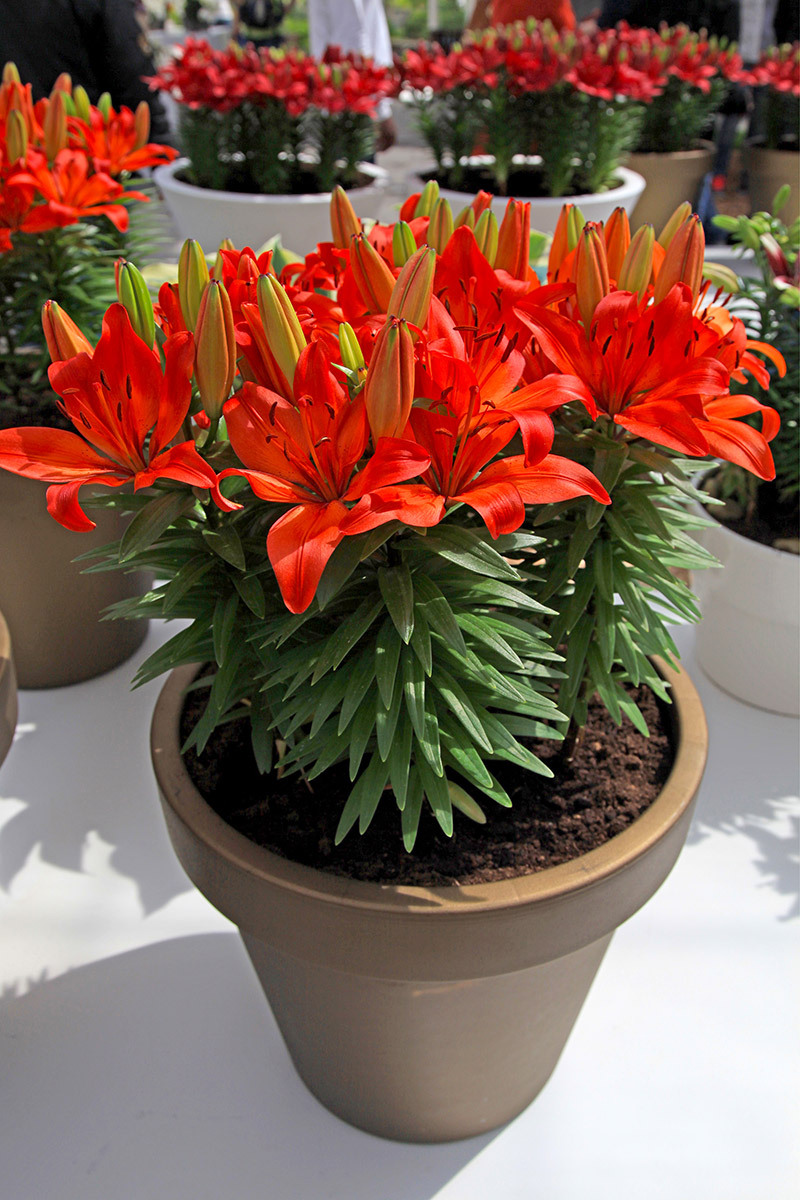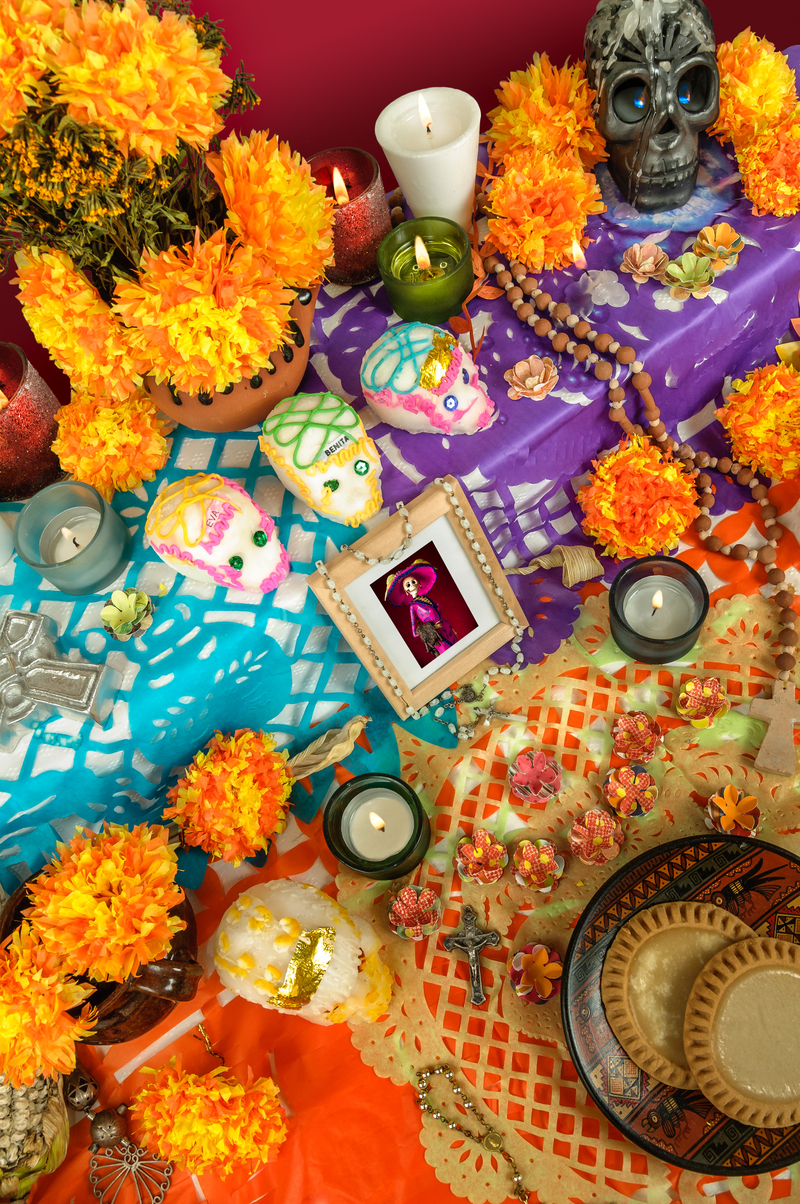Expert Tips to Keep Your Poinsettias Vibrant Longer
Posted on 25/08/2025
Expert Tips to Keep Your Poinsettias Vibrant Longer
Poinsettias are the iconic holiday plant, prized for their vivid red, pink, cream, or white bracts and festive appearance. Whether gracing your home during the festive season or brightening up your winter decor, everyone wants their poinsettia plants to last as long as possible. If you've ever wondered how to keep your poinsettias looking lush and colorful well beyond the holidays, you're in the right place. This comprehensive guide offers expert poinsettia care tips to help you maintain healthy, vibrant poinsettia plants long after the season is over.

Understanding Poinsettias: The Basics
Before we delve into effective poinsettia care strategies, it's important to understand what makes these plants unique. The vivid "flowers" of a poinsettia are actually colored bracts -- modified leaves that surround the tiny, yellow true flowers at the center. Poinsettias (Euphorbia pulcherrima) are native to Mexico and Central America, where they thrive in warm, sunny environments. Understanding their origins provides clear insight into their preferences and care requirements.
Why Do Poinsettias Lose Color and Vibrancy?
Poinsettias can lose their brilliance and wilt for several reasons, including:
- Improper watering
- Exposure to drafts or temperature extremes
- Insufficient light
- Pest infestations or diseases
- Lack of humidity in indoor environments
To keep your poinsettia vibrant, you need to address all these factors. Read on for detailed expert poinsettia plant care tips that will help your plant flourish.
Choose the Healthiest Poinsettia Plant
The first step in achieving long-lasting color and vibrancy is selecting a healthy plant at the store or nursery. Remember these tips:
- Look for vibrant, fully colored bracts. Avoid plants with faded, wilted, or green-tipped bracts.
- Check the true flowers. The small yellow buds at the center should be intact, as dropped or shriveled flowers indicate that the plant is past its prime.
- Inspect the foliage. Healthy leaves should be deep green, plentiful, and free from spots or yellowing.
- Examine the roots and soil. The soil should be moist, not soggy, and the plant firmly rooted in its pot. Avoid plants showing root rot or a strong, musty odor.
Only buy poinsettias that look robust and undamaged if you want to enjoy their color for weeks to come.
Ideal Placement: Light, Temperature, and Drafts
How Much Light Do Poinsettias Need?
For long-lasting colorful poinsettias, place your plant in a bright location that receives at least 6 hours of indirect sunlight each day. Windowsills facing east, south or west are usually perfect, but make sure to avoid intense, direct midday sun that can scorch the bracts and leaves.
Temperature Requirements for Poinsettias
Poinsettias prefer stable temperatures between 65?F and 75?F (18?C-24?C) during the day and cooler nights that don't drop below 60?F (15?C). Avoid sudden temperature changes and don't let your plant touch cold window panes or be exposed to cold drafts, as this can cause leaf drop and diminish vibrancy.
Keep Away from Drafts and Heat Sources
- Do not place your poinsettia near exterior doors or windows that are frequently opened.
- Avoid positioning next to heaters, radiators, or fireplaces as excessive heat can dry out the plant rapidly.
- Keep away from air conditioning vents and fans, which can cause dehydration and chilling.
Watering Your Poinsettia Correctly
How Often Should You Water a Poinsettia?
The most common cause of a failing poinsettia is overwatering or underwatering. Here are the best practices to keep poinsettias healthy:
- Check the soil moisture daily by touching the soil surface. Water only when the soil is dry to the touch about an inch below the surface.
- Avoid letting the plant sit in standing water. Ensure the pot has drainage holes and remove any excess water from the saucer 30 minutes after watering.
- In drier indoor climates, poinsettias might need more frequent watering--but avoid waterlogging!
- If your plant came with decorative foil, poke holes in the bottom or remove the foil when watering to ensure proper drainage.
How to Water a Poinsettia
- Use room-temperature water to prevent "shocking" the roots.
- Water gently at the base of the plant, avoiding splashing the bracts and leaves.
- Aim for a thorough soak but don't let the soil become soggy.
Consistent, appropriate watering is crucial to keeping poinsettias vibrant for weeks or months.
Humidity and Air Quality: A Secret to Lasting Color
During winter, indoor air can become quite dry due to heating. Poinsettias prefer humidity levels between 50% and 60%.
- Group houseplants together to create a localized humid zone.
- Place a shallow tray of water with pebbles under the poinsettia's pot (without letting the roots sit directly in water).
- Consider using a humidifier to maintain proper humidity levels if your indoor air is very dry.
- Mist your poinsettia lightly (avoiding bracts) if humidity is especially low.
Higher humidity will help prevent your poinsettia's leaves and bracts from wilting and dropping prematurely.
Fertilizing for Longevity and Vibrancy
While your holiday poinsettia doesn't need fertilizing while in full bloom, if you hope to keep the plant thriving and possibly rebloom for next year, start fertilizing after the blooming period:
- Use a balanced, all-purpose houseplant fertilizer every 2 to 4 weeks once new growth appears.
- Follow fertilizing rates as indicated on the package--over-fertilizing can harm the plant.
- Never fertilize while your poinsettia is still blooming unless recommended by a specialist.
Proper fertilization ensures lush green leaves and sets the stage for a new bloom cycle next holiday season.
Pruning and Maintenance: Prolonging Poinsettia Beauty
As blossoms begin to fade, prune your poinsettia to encourage bushier growth and future blooming:
- Trim stems down to about 4 inches above the soil after bracts wilt or fade.
- Continue to care for your plant through spring and summer by providing ample light, regular watering, and proper fertilizing.
- Pinch back new growth in early summer to promote a fuller plant.
Annual pruning not only maintains a tidier shape but also encourages another flush of color next winter for those who wish to "re-bloom" their poinsettia.
Pest and Disease Management for Healthy Poinsettias
Even the healthiest poinsettias can fall victim to pests and disease. Stay alert for these common problems:
- Whiteflies, spider mites, aphids, and mealybugs can infest leaves and stems. If pests are detected, use insecticidal soap or neem oil, following instructions carefully.
- Fungal diseases such as root rot often result from overwatering or poor air circulation. Repot in fresh, well-draining soil if you suspect rot, and improve airflow around the plant.
- Remove yellowed or damaged leaves promptly and keep the area around your plant clean.
Reviving a Wilting Poinsettia
If your poinsettia starts to look tired or faded, act quickly:
- Check for dry or soggy soil--adjust your watering routine accordingly.
- Inspect for pests or disease and treat promptly.
- Move the plant to a brighter location if light is insufficient (but avoid direct sun).
- Increase humidity with a pebble tray or humidifier.
With quick attention, many ailing poinsettias can bounce back and remain radiant for several more weeks!
Can You Rebloom Poinsettias Next Year?
If you want to enjoy your poinsettia's vibrant bracts again next winter, you can attempt to rebloom the same plant:
- Continue regular care through spring and summer.
- In early autumn, restrict the plant's exposure to light to only 10-12 hours daily for about 8-10 weeks (complete darkness is required overnight to trigger bract coloring).
- Resume normal lighting and care once bracts begin to regain color.
While this process can be a challenge -- and many opt for a new plant each year -- reblooming is possible with diligence!
Decorating with Poinsettias: Make Them Last
If you're using poinsettias for holiday decor, use these display tips for maximum vibrancy:
- Arrange plants in groups for added humidity and a fuller look.
- Keep them out of traffic flow to avoid bumping and leaf drop.
- Do not place near fruit bowls, as ethylene gas from ripening fruit can cause bract drop.
- Rotate your poinsettia every few days so all sides receive light evenly.
Common Myths About Poinsettia Care
- Myth: Poinsettias are poisonous. Fact: Poinsettias are not deadly to humans or pets but may cause mild discomfort if ingested.
- Myth: More water equals longer-lasting color. Fact: Overwatering is a primary cause of root rot.
- Myth: They only last for a few weeks. Fact: With correct care, poinsettias can stay vibrant for months.
Poinsettias All Year: Transforming Your Holiday Plant
With proper poinsettia plant care, you can enjoy their luscious foliage well into spring and summer. In fact, many let their poinsettia continue as a regular houseplant after the holidays, delighting in the deep green leaves year-round.
Summary: Key Steps to Keep Your Poinsettias Vibrant Longer
- Select a healthy, robust plant from a reputable source.
- Give your poinsettia bright, indirect light for at least 6 hours daily.
- Maintain stable temperatures and avoid extreme drafts or heat sources.
- Water only when the soil surface is dry and ensure good drainage.
- Boost humidity in dry winter homes.
- Treat pests and diseases promptly, and prune after flowering.
- Decorate and place your poinsettia where it can shine without risk of damage!
Follow these expert recommendations and your poinsettia's brilliant bracts will last well beyond the festive season, keeping your home colorful and cheerful throughout the winter months. *For true experts, try reblooming your plant for next year--a rewarding challenge for any gardener!*

Frequently Asked Questions About Keeping Poinsettias Vibrant
Q: How long can poinsettias last indoors?
A: With optimal care, poinsettias can stay vibrant and healthy for up to six months or more indoors.
Q: Can poinsettias survive outdoors?
A: Only in USDA Zones 9-11 as tender perennials. In colder climates, keep them as indoor houseplants.
Q: Do poinsettias need special food or fertilizer?
A: Not while blooming, but yes, use a balanced fertilizer every 2-4 weeks after the blooming period to stimulate new growth.
Q: What's the most common mistake with poinsettias?
A: Overwatering! Always allow the top inch of soil to dry before watering again, and never let the pot sit in standing water.
Conclusion: Enjoy Vibrant, Long-Lasting Poinsettias
*With the right care, your poinsettia doesn't have to be a fleeting symbol of the holidays. Use these expert tips and techniques to keep your festive plant lush, beautiful, and colorful for months on end. Happy poinsettia growing!*
Latest Posts
Expert Tips to Keep Your Poinsettias Vibrant Longer
Secrets to Thriving Hydrangeas
Unveiling the Hidden Meanings of Peony Flower Colours





